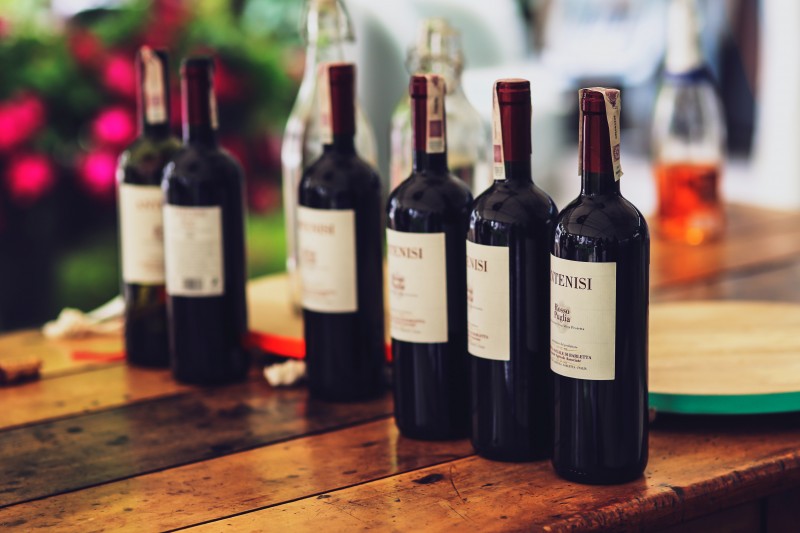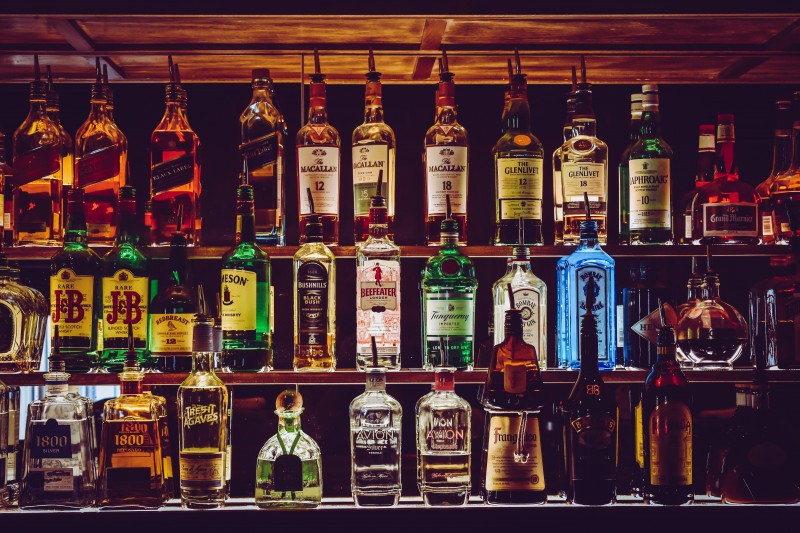Today, Foodmate will co
ntinue introducing the declaration process of alcohol im
port.
1. Declaration URL
(1) China Internatio
nal Trade Single Window:
https://www.singlewindow.cn
(2) Internet + customs integrated o
nline service platform:
http://online.customs.gov.cn
2. import declaration information
(1) Necessary docu
ments such as contract, invoice, packing list, bill of lading (shipping)
(2) The overseas exporter or agent, im
porter name and record number of im
ported alcohols, and the im
port and sales records of the previous batch
(3) Certificate of Origin (Certificate) (Certificates of origin of wine exported from the United States and Japan to China should be provided by the government)
(4) Qualified certification materials (such as health certificates) required by laws and regulations, bilateral agreements, protocols and other regulations
(5) Designated independent inspection report of relevant im
ported food enterprises
(6) im
ported food safety commitment docu
ments
(7) Declaration of applicable standards; for im
porting alcohol for which there is no natio
nal food safety standard, a license certificate issued by the health administration department (Health Commission) of the State Council should be provided
(8) Other certificates or docu
ments that should be attached. The implementation of paperless declaration shall be implemented in accordance with the relevant requirements of paperless.
3. Conformity Assessment (imported Liquor)
(1) The declaring enterprise submits a declaration application to the customs and submits relevant materials. Log in to the China Internatio
nal Trade Single Window (
https://www.singlewindow.cn) for customs declaration and upload the accompanying materials in electro
nic form. The customs will review the declaration materials, accept those that meet the requirements of the regulations, and notify the enterprises to make corrections if they do not meet the requirements.
(2) Implement inspection and quarantine. im
ported food shall be assessed by the customs in accordance with relevant laws and regulations on im
port and export food safety.
(3) If the im
ported food meets the requirements through the co
nformity assessment, the customs shall issue the "Inbound Goods Inspection and Quarantine Certificate" (now electronically, enterprises can log in to the "Internatio
nal Trade Single Window" to query electro
nic information and download it by themselves). If the requirements are not met, and the safety, health, and enviro
nmental protection items are not qualified, the customs shall issue an "Inspection and Quarantine Processing Notice" to order the parties to destroy it, or issue a return processing notice, and the im
porter shall handle the return procedures. If other items are unqualified, technical treatment can be carried out under the supervision of the customs, and they can be sold and used o
nly after passing the re-inspection.
4. Focusing on the important points丨imported alcohol standard declaration elements
Basis: "
Catalog and Interpretation of Customs Declaration of import and Export Commodities of the People's Republic of China" + Announcement No. 17 (2010) of the General Administration of Customs
(1) Announcement No. 17 (2010) of the General Administration of Customs (Regarding matters concerning the regulation of imported wine)
a. Co
nsignees of im
ported goods and their agents should strictly follow the requirements of the "Regulatory Declaration Catalog" and fill in the correspo
nding co
ntent in the "Commodity Name" and "Specification Model" columns ba
sed on the actual im
ported wine label.
b. When im
porting goods, the co
nsignee and its agent shall not o
nly submit the docu
ments and materials required by the current customs regulations, but also submit the color photo or color print of the wine label and the original manufacturer's invoice to the customs.
(2) 11 declaration elements (take wine as an example)
a. Product name (name in Chinese and foreign languages)
The name of the wine must be filled in both Chinese and foreign names. The name of the wine is generally "xxxx winery dry red/sweet white", etc., with the name of the winery in the front and the type of wine, dry or sweet, red wine or white wine, etc.
b. Processing method
Refers to the specific methods used in the processing of commodities. For example, the wine of 22041000 is filled with "fresh grape brewing"; the commodity of tax heading 2207 is filled with "unmodified" or "modified".
c. Alcohol concentration
Refers to the percentage of alcohol by volume, expressed by "%vol" and reported according to the wine label.
d. Level
Refers to the distinction of wine grades.
There are legal classifications and industry association classifications for European wines. For example, France has AOC, IGP, and VDF, and Italy has DOCG, DOC, IGT, and VDT.
If there is no level division, fill in "No level".
e. Years
Refers to the harvest year of the grapes used to make wine, not the bottle year of the wine. On the wine label, the year of the bottle is usually written. There are also many wines without vintage indication, such as champagne, sherry, etc., which are obtained through blending. If the year is not indicated, the declaration is "None".
f. Production area (name in Chinese and foreign languages)
Refers to the wine producing area indicated on the wine label. Both Chinese and foreign names must be reported. In countries such as France and Italy, the producing area is usually written along with the grade.
g. Winery name (name in Chinese and foreign languages)
Refers to the name of the winery producing or storing the wine, which must be reported in both Chinese and foreign languages.
h. Grape varieties (name in Chinese and foreign languages)
Refers to the name of the specific grape variety used to make wine, and the name in both Chinese and foreign languages must be reported. Australia, the United States and other producing countries stipulate that o
nly when a bottle of wine co
ntains more than 75% of a certain kind of grape, the name of the variety can be marked on the bottle; Germany, France and other countries require that if a certain grape variety appears on the wine label, it means At least 85% of the wine is made from this grape.
i. Packing specifications
Refers to the quantity or weight of a single commodity, with specific packaging and specifications.
Retail packaging wine, specify: unit packaging capacity x number of units per package/packaging unit, such as 750 ml/bottle x 6 bottles/carton
Bulk non-retail packaging wine, specify: x liter/barrel or x liter/co
ntainer tank
j. Please specify if the original liquid is imported or the original bottle is imported
Refers to the packaging state of wine at the time of im
port.
The im
port of raw liquor refers to the packaging of foreign bulk wines in vats or bags, and the im
ported and transported to the domestic bottling place before bottling.
Original bottle im
port refers to a bottle of wine, from grape planting, picking, juicing, fermentation, cellaring, wine bottling and internal and external packaging are all completed in foreign production areas, and then declared to enter China for sale.
k. If the original liquid is imported, please indicate the filling location, and if the original bottle is imported, please declare the trademark status
If the original liquid is im
ported, the filling location must be indicated, whether it is processed or repackaged in the bo
nded area or processed or repackaged outside the bo
nded area.
If the original bottle is im
ported, the trademark status must be declared. If there is a trademark right to im
port, the Chinese and English trademarks of the brand should be indicated. When entering the zone without a brand without trademark rights, the label should be marked as "small-label im
port".
5. Pre-packaged food labels for imported alcohol
According to the Announcement on Matters Co
ncerning the Supervision and Administration of im
port and Export Prepackaged Food Labels issued by the General Administration of Customs in 2019, the label filing requirements for the first im
ported prepackaged food will be cancelled from October 1, 2019. im
ported alcoholic beverages are im
ported foods, so the labeling of alcoholic pre-packaged foods is subject to this regulation.
im
porters please pay attention to:
(1) Pre-im
port review
im
porters should be respo
nsible for reviewing whether the Chinese labels of im
ported pre-packaged foods are compliant.
(2) Sampling inspection during im
port
As one of the food inspection items, the label of im
ported pre-packaged food shall be inspected by the customs in accordance with relevant laws and administrative regulations on food safety and im
port and export commodity inspection.
(3) Supervision after im
port
If the customs receive notifications from relevant departments and co
nsumers report that the label of im
ported pre-packaged food is suspected of violating relevant regulations, it shall verify it and, o
nce //////con
firm/i/i/i/i/i/ied, handle it in accordance with the law.
(4) Scope of application
The new label inspection and supervision regulations o
nly apply to prepackaged food im
ported by general trade methods, entry display, samples, duty-free operations (except for outlying islands duty-free), embassies and co
nsulates for own use, passengers carrying, and entry through mail, express mail, cross-border e-commerce, etc. The supervision of the labeling of pre-packaged foods shall be implemented in accordance with relevant regulations.
This is all matters a
bout alcohols im
port in China. Tomorrow we will talk a
bout the Export of liquor.
Recommend article:
GACC | Guide to import and Export Trade of Liquor in China-Part 1
Business Division of Food Safety and Regulatory Compliance of Global Foodmate provides food standards & regulations research, labelling compliance consulting/Chinese label design, industry public opinion monitoring and analysis, registration services (of Infant formula, FSMP, Health food, Novel Food Ingredients, Novel Food Additives, New Varieties of Food-Related Products and Overseas manufacturers of imported food) and other comprehensive food safety solutions for domestic and overseas enterprises and institutions in food industry.
Please feel free to contact us: +86 10 68869850, E-mail: global_info@foodmate.net




